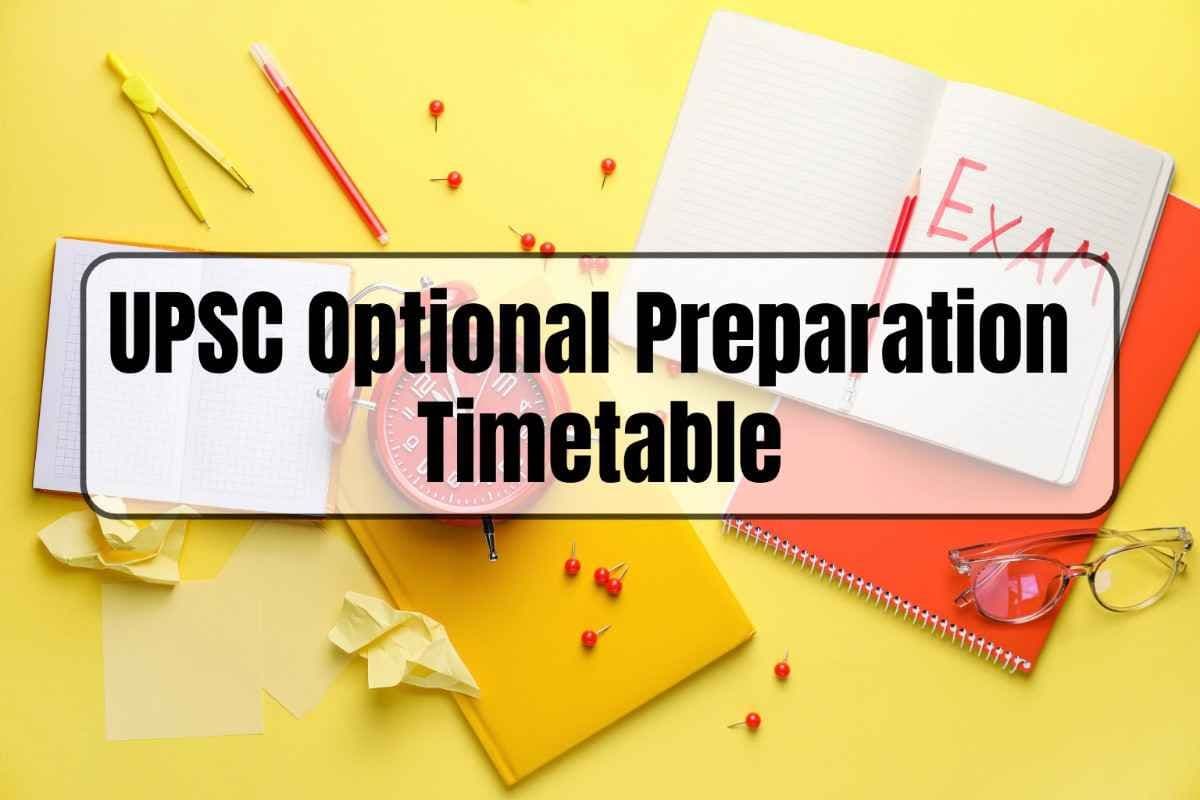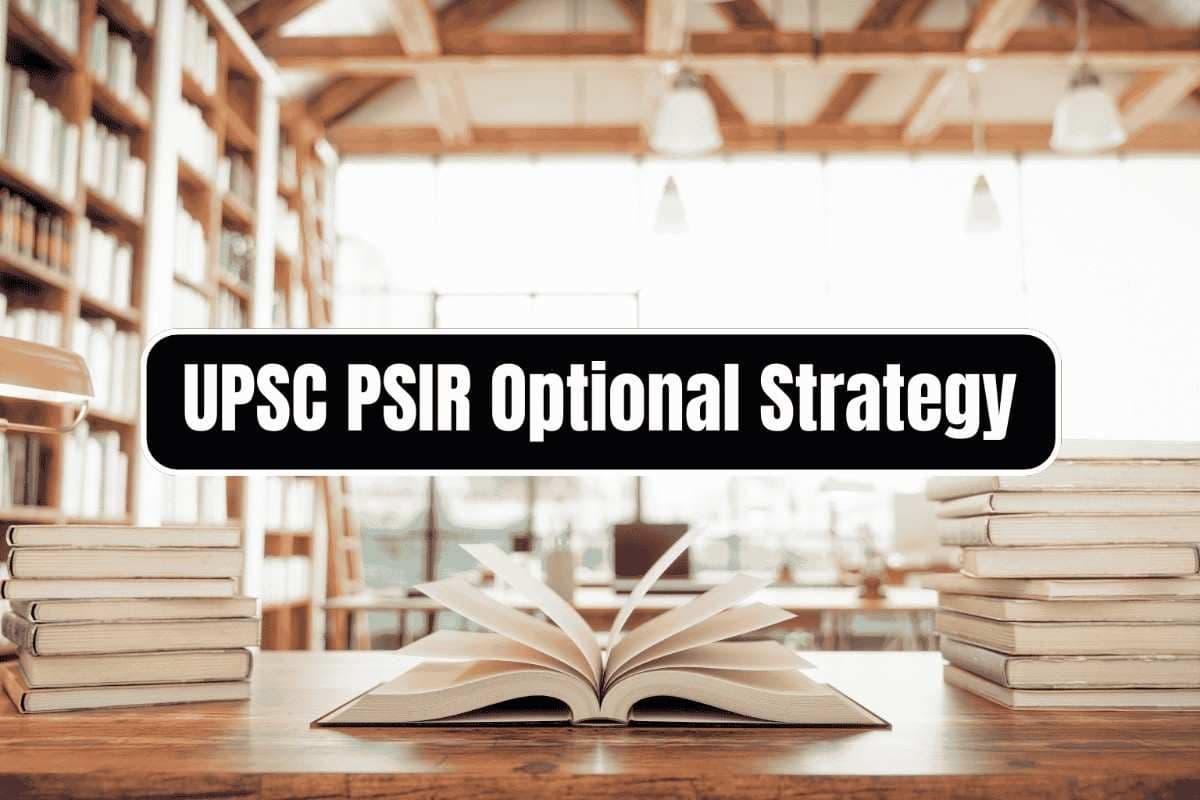Best Strategy for UPSC Mains Geography Optional: Study Plan & Topper’s Insights
Aug, 2025
•5 min read
Geography Optional is a smart and popular choice for many UPSC aspirants, with toppers such as Ira Singhal (AIR 1, 2014), Saumya Pandey (AIR 4, 2016), and Pratham Kaushik (AIR 5, 2017) proving its potential. With the right strategy and consistent effort, it can truly become a decisive advantage in the Civil Services Examination.
In this guide, you’ll find a well-structured study plan with answer-writing techniques, a realistic timetable, and a focused approach to help you master the Geography Optional and score high. Let’s get started!
How the Right Strategy Can Boost Your Geography Optional Score
A well-thought-out strategy is crucial to tackle the vast and dynamic syllabus of the Geography Optional. With the right approach, you can simplify preparation and maximise your score.
- Scientific and Logical Nature: Geography’s scientific and logical nature makes it easier to understand and recall in the exam.
- Visual Enhancement: Geography lets you use maps and diagrams, saving time and helping you score better.
- Complete Coverage: Strategic planning ensures all syllabus topics, from Physical to Indian Geography, are covered thoroughly without gaps.
- Better Answers: Regular writing practice improves structure, clarity, use of diagrams, and overall presentation, which is key to scoring well.
- Time-Smart Prep: Timed answer writing and mock tests help manage the paper efficiently during the exam.
Also read: UPSC Mains Geography Optional Syllabus, Paper Structure, and Study Materials.
Best Strategy for Geography Optional to Score 300+ Marks in UPSC
A smart strategy helps you tackle the Geography Optional systematically, master key concepts, and boost your Mains score. Let’s break down how to build that strategy for the Mains Geography optional.
1. Understand the Syllabus Well
- The Geography Optional syllabus comprises two main papers: Paper I, covering Physical and Human Geography, and Paper II, which focuses on India-specific topics.
- Study each topic and note key subtopics. For example, under Geomorphology, focus on landform development, plate tectonics, and weathering processes. Under Indian Agriculture, note the Green Revolution, cropping patterns, and food security issues.
Tip: Create topic-wise weightage charts from the last 15 years' question papers and identify high-frequency topics like monsoons, agriculture, and regional development.
2. Follow the Strategic Study Timeline
A well-structured study plan helps you cover the entire syllabus, enhance your writing skills, and revise regularly.
| Phase | Duration | Focus Areas | Key Coverage |
|---|---|---|---|
| Foundation Building | Months 1-2 | NCERT + Basic Concepts |
|
| Paper 1 Mastery | Months 3-4 | Physical + Human Geography |
|
| Paper 2 Intensive | Months 5-6 | Indian Geography Focus |
|
| Answer Writing Phase | Month 7 | Writing Skills Development |
|
| Revision & Mock Tests | Month 8 | Comprehensive Review |
|
For a curated Geography optional booklist, check out: UPSC Mains Geography Optional Syllabus, Paper Structure, and Study Materials.
3. Integrate Smart Reading Techniques
Don’t use too many books. Stick to a clear study plan with trusted sources and slowly build strong concepts. Here’s how:
(i) Foundation Phase (First Reading):
- Start with NCERT Class 6-12 Geography (minimum 3 comprehensive readings).
- Focus on understanding basic concepts rather than memorising facts.
(ii) Depth Building (Second Reading):
- Connect related ideas from different chapters to form an integrated understanding, e.g., link climate with agriculture or population with resource distribution.
- Convert complex theories into flowcharts, diagrams, and maps for easier recall and better presentation in answers.
- Add relevant examples, statistics, and recent developments to strengthen answers and make them more UPSC-relevant.
(iii) Integration Phase (Third Reading):
- Link static concepts with current affairs and contemporary issues.
- Create cross-references between Paper 1 theories and Paper 2 applications.
- Develop personal examples and case studies for better retention.
Pro Tip: Follow the 60-40 rule - spend 60% of time on concept understanding and 40% on factual memorisation and current affairs integration.
4. Practice Mapping From Day One
Map questions are the highest-scoring component in Geography Optional, especially in Paper 2. Consistent map practice can guarantee 35-40 marks out of 50 in the map section.
(i) Important Maps
- India Physical Maps: Important locations covering rivers, mountains, plateaus, passes, and peaks.
- India Economic Maps: Key locations including ports, industrial centers, mining areas, and dams.
- World Maps: Locations covering continents, oceans, currents, and climate zones.
(ii) Daily Map Practice Routine:
- Morning Session: Practice 5 India's physical features with exact locations.
- Evening Session: Practice 5 economic/political locations with brief descriptions.
- Weekly Target: Master 35 new locations with 2-line descriptions each.
(iii) Description Writing:
- Write 25-30-word descriptions for each location.
- Include significance, economic importance, and contemporary relevance.
- Link locations to current affairs and government schemes.
(iv) Technical Accuracy:
- Learn latitude-longitude approximations for major features.
- Practice drawing the India outline map in under 60 seconds.
- Master boundary markings, especially in disputed areas.
- Use color coding: blue for water bodies, brown for mountains, green for plains.
4. Build a Smart Answer Writing Strategy
To write good Geography answers, you need clear concepts, logical thinking, and neat diagrams or maps. How you present your answer is just as important as what you write.
(i) Introduction Structure (50-60 words): Brief geographical context or definition.
(ii) Body: Main content of your answer
- Use Subheadings: Break 15-mark answers into 3-4 clear subsections.
- Integrate Diagrams: Include 1-2 relevant diagrams per long answer.
- Map Integration: Draw simple outline maps wherever applicable.
- Case Studies: Use specific examples from different regions.
(iii) Way Forward/ Conclusion: Final words, within 50–60 words, should maintain a balanced and optimistic tone, while pointing towards future possibilities and improvements.
5. Follow a Practice Schedule for Answer Writing
Consistent practice will help you think faster, present ideas clearly, and score better. Follow a consistent plan:
- Months 1–3: Write 2 answers per week, focusing on structure, clarity, and logical flow.
- Months 4–6: Increase to 4 answers per week under strict time limits to improve speed and accuracy.
- Months 7–8: Attempt one full-length mock paper each week to simulate the exam environment.
- Final Month: Practice daily timed answers and take frequent full-length mocks to fine-tune presentation and maximise your scoring potential.
Tip: Make your answer writing more impactful with the SuperKalam Mains Evaluation Tool – get a fair, UPSC-standard assessment in just 60 seconds. No more long waits, get instant, actionable feedback to improve faster.
6. Follow a Three-Tier Revision Plan
Planned revision turns your preparation into better marks. A step-by-step revision plan helps you cover everything and remember it well.
1st Revision: After completing each major topic, you must focus on:
- Concept Clarity: Revisit fundamental principles and definitions.
- Theory Integration: Link different geographical theories and models.
- Diagram Perfection: Practice drawing all diagrams from memory.
- Example Building: Create a personal database of relevant case studies.
Work on:
- Solving topic-wise previous year questions.
- Making concise notes using flowcharts and mind maps.
2nd Revision: About 2–3 months before the Mains, your focus should shift to:
- Answer Writing: Focus on structure, presentation, and time management.
- Current Affairs Integration: Link contemporary issues with syllabus topics.
- Mock Test Performance: Weekly full-length paper attempts.
Work on:
- Joining a test series with a detailed evaluation.
- Practice writing 250-word answers in 15 minutes.
- Revising one-page notes with active recall.
3rd Revision: During the last 30 days before the examination, you must strictly focus on:
- Speed Enhancement: Quick revision using prepared notes only.
- Confidence Building: Focus on strong areas while addressing weak points.
- Exam Simulation: Practice under actual exam conditions.
- Stress Management: Maintain calm confidence through familiar material.
7. Final Week Strategy:
Plan your last week smartly to stay sharp and confident.
- Daily Routine: Revise 8–10 high-priority topics and do quick daily map practice.
- Last 3 Days: Stick strictly to your prepared notes; avoid touching new material.
- Day Before Exam: Keep it light—revise briefly, rest well, and maintain a positive mindset.
Pro Tip: Maintain a "Weakness Register" throughout preparation. Note down areas where you consistently make mistakes and dedicate extra revision time to these topics during the final phase.
Why Geography Optional is the Smart Choice: Success Stories from UPSC Toppers
"Success is not the key to happiness. Happiness is the key to success. If you love what you are doing, you will be successful." - Albert Schweitzer.
This perfectly captures the journey of many UPSC toppers with Geography Optional. Their passion for the subject made preparation both enjoyable and effective, turning effort into success. With its interesting concepts, maps, and real-world relevance, Geography continues to be a rewarding choice for aspirants.
1. Pratham Kaushik (AIR 5, UPSC CSE 2017) – The Record Holder with 327 Marks
What He Did:
- He followed a structured reading pattern, then moved to standard reference books.
- He practiced answer writing from day one of his preparation, ensuring his theoretical knowledge translated into high-scoring answers.
What You Can Follow:
- First, finish the NCERT Geography from classes 6–12 before moving to advanced books.
- Keep a separate notebook for diagrams and practice them with discipline.
- Start writing structured answers daily from the beginning.
2. Saumya Pandey (AIR 4, UPSC CSE 2016) – The First Attempt Wonder
What She Did:
- Saumya accomplished AIR 4 in her very first attempt at age 23 with no Geography background.
- She maintained strict discipline in note-making, creating concise, topic-wise compilations that served multiple purposes.
What You Can Follow:
- Prepare the Geography Optional and GS paper I simultaneously to save time and avoid repeating work. Make topic-wise notes that work for both.
- Spend 30–45 minutes daily on map marking and location-based questions.
Also read: Study and Preparation Strategy for Geography in UPSC Exam.
Conclusion
With the right strategy, steady practice, and reliable resources, scoring 280–300+ in Geography Optional is achievable. Stay focused, believe in your preparation, and remember, consistent effort turns aspirations into top ranks.
Supercharge Your Geography Optional Preparation with SuperKalam!
Tired of waiting days for feedback on your Mains answers? With SuperKalam’s Answer Evaluation Tool, get instant, detailed feedback in just 60 seconds! Start now – Evaluate your answers and unlock smarter prep.
Write. Upload. Improve. Repeat. That’s how toppers build their edge, and so can you.
Explore all of SuperKalam’s resources and take the right step toward your UPSC dream.
Download App Now: SuperKalam: Crack UPSC IAS


